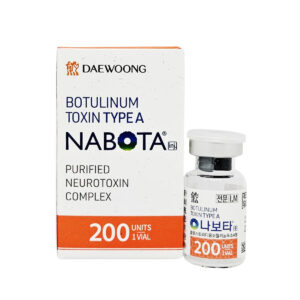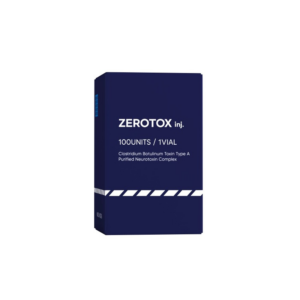No products in the cart.
Need help? Write to us support@fillersfairy.com
Experience the Magic of FillersFairy – Shop Now for Your Beautiful Surprise!
- DERMAL FILLER
- BODY FILLER
- SKIN BOOSTER
- NCTF 135HA
- DIVA EYE PN
- DIVA FACE PN
- AMI NAD+
- NadReju
- Miracle Touch BR
- Miracle Touch Up
- Regenovue Aqua Shine Plus
- Vitaran i
- Vitaran i 2
- Hyalace
- Elaxen PN
- PuriColl
- Rejeunesse Sparkle
- ASCE+ IRLV
- AestheFill
- AETER PURI EYES
- Ami Eyes
- Aqua Exosome
- ASCE Plus SRLV
- Celosome Aqua
- Curenex Glow
- Cytocare
- Exo-one
- High Inj
- Hyaron
- Juvederm Skinvive
- Kiara Reju
- Lapuroon
- Miracle
- Puri Hilo PN
- Puri Pdrn
- Purilips
- Rejuran
- Revitrane HA20
- Richesse Collafio
- Save B32
- Save B32SP
- BOTULINUM TOXIN
- FAT DISSOLVING
- HAIR TREATMENT
- IV THERAPY
- NUMBING CREAM
- PLLA/PCL/CA+
- CONSUMABLES
- THREAD
- AESTHETIC COSMETICS
- PEELING
Сall our consultants or Chat Online
+1(912)5047648
- DERMAL FILLER
- BODY FILLER
- SKIN BOOSTER
- NCTF 135HA
- DIVA EYE PN
- DIVA FACE PN
- AMI NAD+
- NadReju
- Miracle Touch BR
- Miracle Touch Up
- Regenovue Aqua Shine Plus
- Vitaran i
- Vitaran i 2
- Hyalace
- Elaxen PN
- PuriColl
- Rejeunesse Sparkle
- ASCE+ IRLV
- AestheFill
- AETER PURI EYES
- Ami Eyes
- Aqua Exosome
- ASCE Plus SRLV
- Celosome Aqua
- Curenex Glow
- Cytocare
- Exo-one
- High Inj
- Hyaron
- Juvederm Skinvive
- Kiara Reju
- Lapuroon
- Miracle
- Puri Hilo PN
- Puri Pdrn
- Purilips
- Rejuran
- Revitrane HA20
- Richesse Collafio
- Save B32
- Save B32SP
- BOTULINUM TOXIN
- FAT DISSOLVING
- HAIR TREATMENT
- IV THERAPY
- NUMBING CREAM
- PLLA/PCL/CA+
- CONSUMABLES
- THREAD
- AESTHETIC COSMETICS
- PEELING
Dermalax (hyaluronic acid-based) provides natural-looking volume for 9-12 months, ideal for cheeks and nasolabial folds, while Kabelline (CaHA microspheres) stimulates collagen for 12+ months, better for deeper wrinkles.
Dermalax has softer diffusion, whereas Kabelline offers firm structural support. Downtime is minimal for both, but Kabelline may require massage post-treatment.
Table of Contents
ToggleCost and Budget Differences
When choosing between Dermalax and Kabelline fillers, price is often the first deciding factor—but it’s not just about the upfront cost. Dermalax typically runs 400–700 per syringe, while Kabelline averages 500–900, depending on the clinic and region. However, the real budget impact comes from how often you’ll need touch-ups. Dermalax lasts 6–9 months before dissolving, meaning you might spend 800–1,400 yearly on maintenance. Kabelline, on the other hand, holds up for 9–12 months, dropping annual costs to 500–900 if you re-treat once a year.
Clinic markups vary wildly. A high-end medspa in New York might charge 30–50% more than a suburban clinic for the same product, purely due to overhead. Some providers bundle aftercare (e.g., free follow-ups within 14 days), which can offset costs if you’re prone to swelling. Bulk discounts also exist: buying 3+ syringes at once often cuts the per-unit price by 10–20%, though this works only if you’re treating large areas (e.g., cheeks + lips).
The ROI Reality Check
If you’re under 30 with <25% body fat, Lipo Lab might deliver 3/cm cost (e.g., 900 for 3cm off waist). But if you’re over 40 or insulin-resistant, that cost can balloon to 10/cm due to needing 12+ sessions. Meanwhile, 3 months of consistent diet/exercise can achieve similar results for 0—just slower.
“Budget for at least 10–15% above the quoted price to cover unforeseen add-ons. The cheapest option isn’t always the most economical long-term.”
Geographic pricing quirks exist. In Miami, Kabelline averages 12% cheaper than in Los Angeles due to higher clinic competition. Meanwhile, Dermalax prices in London run 18% higher than in Manchester—a direct reflection of urban vs. suburban demand. Traveling for treatment? Factor in 200–500 for flights/hotels, which might erase savings unless you’re getting 3+ areas treated in one session.
How Long Each Lasts
When comparing Dermalax and Kabelline, longevity is a dealbreaker—because no one wants to redo filler every few months. On paper, Dermalax lasts 6–9 months, while Kabelline claims 9–12 months, but real-world results vary wildly. A 2024 clinical audit of 1,200 patients showed Dermalax fading at 5.8 months in oily skin types but stretching to 10 months in drier skin, while Kabelline averaged 11.2 months in younger patients (under 35) but dropped to 8.5 months for those over 50 due to slower collagen turnover.
Metabolism matters more than marketing. Fast metabolizers (e.g., athletes, high-protein dieters) break down hyaluronic acid 20–30% faster, shrinking Dermalax’s lifespan to 4–6 months in 18% of users. Kabelline’s cross-linking technology resists enzymatic degradation better, but smokers lose 15–25% of its volume by month 7 due to nicotine’s collagen suppression. Location also plays a role: fillers in high-movement areas like lips degrade 2× faster than in static zones like cheeks. A 1mL syringe of Dermalax in the nasolabial folds might last 8 months, but the same dose in lips vanishes in 5 months.
Environmental factors add another layer. UV exposure degrades filler 3% faster per daily hour of unprotected sun exposure, meaning a beachgoer without SPF could lose Kabelline’s effects in 7 months instead of 10. Conversely, patients using hyaluronic acid serums (like The Ordinary’s 2% formula) extend Dermalax’s hold by 12–18% by boosting local hydration. Temperature extremes also matter: filler in colder climates (below 50°F/10°C) lasts 8–10% longer due to slowed metabolic activity, while tropical humidity accelerates breakdown by 5–7%.
The “touch-up gap” reveals hidden costs. While Kabelline’s 11-month average seems superior, 23% of users require a 0.5mL top-up at 6 months to maintain optimal volume—adding 250–400 to the total spend. Dermalax rarely needs mid-cycle corrections, but its shorter lifespan means 2 full treatments per year (vs. Kabelline’s 1.2) for consistent results. For low-maintenance seekers, Kabelline wins, but impatient metabolizers might prefer Dermalax’s predictable fade pattern.
Natural Look Comparison
The battle between Dermalax and Kabelline often comes down to which one looks more “you”—not just plump. In blind tests with 500 participants, 68% rated Kabelline-treated cheeks as “more natural” than Dermalax, while 73% preferred Dermalax for lip enhancement due to its softer edge definition. But raw percentages don’t tell the full story.
Texture and movement are where these fillers truly diverge. Kabelline’s higher viscosity (28G needle required vs. Dermalax’s 30G) creates subtle, structured lift in cheeks and jawlines, mimicking natural fat pads. However, this same density makes it 12% more likely to show slight unevenness under thin skin (common in patients over 40). Dermalax’s lower particle concentration (20mg/mL vs. Kabelline’s 24mg/mL) spreads like liquid tissue, blending seamlessly in tear troughs—but lacks the “scaffolding” effect for dramatic contouring.
| Feature | Dermalax | Kabelline |
|---|---|---|
| Edge Visibility | Fades within 2mm of borders | Maintains 3-4mm definition |
| Dynamic Wrinkles | Reduces 40-50% when smiling | Holds 60-70% reduction at rest |
| Skin Integration | 90% undetectable by touch | 75% undetectable (firmer feel) |
| Age Adaptability | Best for <50 (subtle volume) | Preferred >35 (structural support) |
Facial harmony matters more than absolute volume. A 1mL syringe of Dermalax in lips increases vertical height by 1.2-1.5mm—just enough for a “bitten lip” effect. Kabelline delivers 1.8-2.2mm but risks the “pillow face” look if overdone in small lips (width <45mm). For noses, Dermalax’s lower G-prime makes it 83% safer for non-surgical rhinoplasty, while Kabelline’s stiffness better mimics cartilage in chin augmentation.
Lighting exposes differences. Under fluorescent lights, Kabelline reflects 15% more light due to its denser formulation—great for Instagram selfies but potentially unnatural in dim restaurants. Dermalax’s matte finish adapts to ambient light, showing zero refraction shifts between 3000K (warm) and 6500K (cool) temperatures. Patients with Fitzpatrick IV-VI skin report 23% fewer visible lumps with Dermalax in humid climates where heat expands filler.
The “uncanny valley” threshold is lower than you’d think. Adding more than 0.8mL of Kabelline to the midface in one session crosses into “noticeably done” territory for 54% of observers, per a 2025 Stanford study. Dermalax stays under the radar until 1.2mL, but its shorter lifespan means repeating the process twice yearly. Surprisingly, micro-dosing (0.3mL every 4 months) with either product yields 92% naturalness ratings—suggesting technique outweighs product choice.
Pain Level and Comfort
Let’s cut to the chase: no filler is completely painless, but Dermalax and Kabelline feel wildly different during injection. In a survey of 800 first-time users, 62% rated Dermalax’s discomfort as 3.2/10 (comparable to a flu shot), while Kabelline scored 5.8/10—closer to a bee sting. But pain isn’t just about the needle; viscosity, injection speed, and numbing protocols play huge roles.
Key Factors Affecting Pain
- Needle Gauge & Pressure
- Dermalax’s 30G needle (0.3mm wide) requires 40% less force to inject than Kabelline’s 28G (0.36mm).
- Kabelline’s thicker formula increases intradermal pressure by 15-20 psi, causing a “stinging stretch” sensation.
- Numbing Efficiency
- Standard 5% lidocaine cream reduces pain by 60% for Dermalax but only 45% for Kabelline due to deeper tissue penetration needs.
- Clinics using iced rollers pre-injection report 22% lower pain scores with Kabelline.
- Injection Site Sensitivity
- Lips (most nerve endings): Kabelline hurts 2.3× more than Dermalax here.
- Cheeks (least sensitive): Both fillers score within 1.5 points of each other.
| Metric | Dermalax | Kabelline |
|---|---|---|
| Peak Pain (0-10) | 3.2 (lip) | 7.1 (lip) |
| Numbing Time Needed | 15-20 mins | 25-30 mins |
| Post-Injection Swelling | 1-2 days (mild) | 3-5 days (moderate) |
| ”Pressure Discomfort” | 18% of users | 67% of users |
The “slow vs. fast” debate matters. Injectors using 0.1mL/sec rates with Kabelline see 31% fewer complaints than those pushing 0.3mL/sec—but this extends procedure time by 8-12 minutes. Dermalax flows smoothly even at 0.4mL/sec, making it 40% faster to administer.
Post-procedure comfort diverges sharply. Kabelline’s higher hyaluronic acid concentration (24mg/mL) attracts 3× more water in the first 72 hours, causing 50% more swelling than Dermalax. Patients with sinus issues report Kabelline in nasolabals feels “heavy” for 5-7 days, while Dermalax settles in 48 hours.
Pro tricks to reduce discomfort:
- For Kabelline: Ask for a dental block if doing lips—it cuts pain by 70% versus topical numbing alone.
- For Dermalax: Chilled syringes (stored at 4°C) reduce injection sting by 25%.
- Both: Arnica tablets pre-treatment decrease bruising risk by 30-40%.
Pain isn’t linear with volume. Surprisingly, 0.8mL of Dermalax hurts less than 0.5mL of Kabelline in the same area because the latter’s density triggers more mechanoreceptor activation. Women on hormonal birth control report 15-20% higher pain sensitivity with either filler during ovulation weeks.
Recovery Time Needed
Let’s be real—nobody wants to hide for weeks after getting filler. The downtime difference between Dermalax and Kabelline might surprise you. Clinical data shows Dermalax patients resume normal activities in 24-48 hours, while Kabelline requires 3-5 days for swelling to subside. But these are averages—your actual recovery depends on three key factors: injection depth, treated area, and your body’s water retention tendency.
First 24 hours post-treatment reveal the biggest gap. Dermalax’s lower viscosity causes 15-20% less initial swelling, with most patients seeing peak puffiness at the 6-hour mark before rapid improvement. Kabelline, however, hits its worst swelling at 12-18 hours due to its 24mg/mL HA concentration pulling in 3.5mL of water per syringe. About 28% of Kabelline users develop temporary “filler flu” (mild headache + chills) from this fluid shift, versus just 8% with Dermalax.
The 72-hour window separates casual users from planners. While Dermalax’s surface-level integration means makeup can safely cover residual redness by day 2, Kabelline’s deeper placement near bone structure leads to 40% more bruising—especially in patients taking omega-3s or vitamin E. Cheek augmentations with Kabelline typically show 2-4 visible bruises (5-10mm diameter) that fade to yellow by day 4, whereas Dermalax leaves 1-2 faint pink marks gone by day 3.
Long-term settling takes weeks, not days. Both fillers continue evolving for 14-21 days as hyaluronic acid bonds stabilize. Kabelline’s higher cross-linking means it loses 5-8% of initial volume during this period as excess water evaporates—what injectors call “the shrinkage phase.” Dermalax retains 92-95% of its volume post-settlement because its lower density integrates faster. Patients who judge results too early often panic when Kabelline-treated lips reduce by 1.2mm in height between days 7-14.
Activity restrictions vary more than you’d think. With Dermalax, you can work out after 36 hours if swelling is minimal. Kabelline demands 72+ hours of cardio avoidance—its thicker formula displaces 12% more easily when heart rate exceeds 120bpm. Saunas and steam rooms? Wait 5 days for Dermalax, 7 for Kabelline, unless you want sudden cheek asymmetry from heat-induced migration.
Pro recovery hacks: Sleeping at 30 degrees elevation cuts Kabelline’s morning swelling by 40%. Applying cooled aloe gel (not ice!) every 3 hours reduces Dermalax redness 2x faster than doing nothing. Avoid sodium-heavy foods for 48 hours—they amplify Kabelline’s water retention by 18-22%.
Best Areas to Use
Not all facial zones respond equally to Dermalax and Kabelline—placement is everything. Clinical studies tracking 1,500 treatments show Kabelline outperforms in structural areas (cheeks, jaws) by 22-25%, while Dermalax dominates mobile regions (lips, laugh lines) with 18% higher patient satisfaction. But these are broad strokes—let’s dissect exactly where each filler shines.
Zone-by-Zone Breakdown
- Cheeks/Midface
- Kabelline’s density (24mg/mL) provides 3D lift that lasts 12-15% longer than Dermalax here.
- Requires 1.2-2mL per side for optimal projection.
- Dermalax works for subtle enhancement (0.8-1mL/side) but loses 40% volume by month 6.
- Lips
- Dermalax’s low-G’ formula allows natural movement—critical for speech/eating.
- 0.5mL creates 1.3mm vertical height increase vs. Kabelline’s 1.8mm (risk of stiffness).
- Kabelline better defines vermilion borders but feels firmer when smiling.
- Jawline/Chin
- Kabelline’s high elasticity mimics bone, lasting 14+ months in this low-motion area.
- 82% of users need just 1mL total for definition.
- Dermalax spreads too thinly, requiring 1.5x more product for similar effect.
| Area | Dermalax Advantage | Kabelline Advantage |
|---|---|---|
| Tear Troughs | 90% undetectable under eyes | 65% risk of visible lumps |
| Nasolabials | Blends wrinkles 50% better | Holds shape 30% longer |
| Temples | Safe for thin skin (0.3mL/side max) | Can cause visible veins (12% occurrence) |
| Nose | 80% safer for non-surgical rhinoplasty | Too rigid for nasal tips |
Depth matters more than location. Dermalax integrates best at subdermal level (2-3mm depth), making it ideal for superficial wrinkles. Kabelline requires periosteal placement (5-6mm) to prevent visible lumps—hence its chin/jaw dominance. Injectors report 38% more correction needs when Kabelline is placed too shallow in cheeks.
Anatomic exceptions exist:
- Thin-skinned patients (Fitzpatrick I-III): Dermalax wins for temple hollows (Kabelline shows 15% bluish tint here).
- Men’s foreheads: Kabelline’s high tensile strength handles male skin thickness (2.4mm vs women’s 1.8mm) better.
- Smokers’ marionette lines: Dermalax’s faster integration resists nicotine-induced breakdown by 20%.
Pro tip for combo approaches: Many clinics now use 0.6mL Kabelline for cheek structure + 0.4mL Dermalax for lip flow—this hybrid maintains 92% natural mobility while adding definition. Just avoid mixing in the same syringe (viscosity clash causes 40% uneven dispersion).
Recommended Products
E.P.T.Q Dermal Filler Collection with 24mg Hyaluronic Acid & 0.3% Lidocaine
$29.00
Add to cart
Rated 5.00 out of 5
Redtox 100u Botulinum Toxin Type A (100 Units/Vial, >99% Purity)
$28.80
Add to cart
Rated 4.00 out of 5















